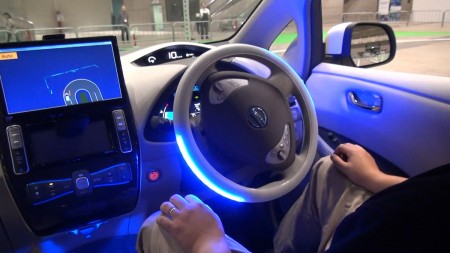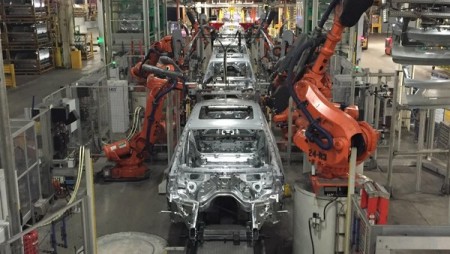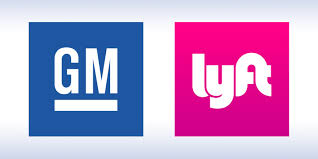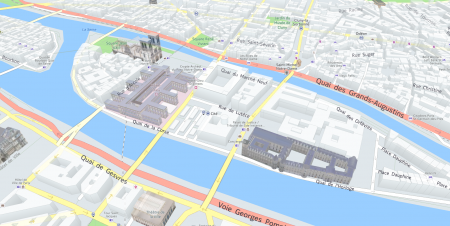March 4, 2016- At international auto shows around the world this winter more and more manufacturers are pushing autonomous features in their vehicle packages. Why? It has little to do with safety. It has little to do with concern for the driving public. It has everything to do with keeping Google and Apple from taking a huge segment of business away from them. As in the development of smartphones, a hardware platform for cloud application delivery systems, automobiles may soon become no more than smartphones on wheels with Apple and Google the deliverers of the software and apps, limiting car manufacturers to doing after-sale lube jobs and tire changes.
That seems to be a strong motivator for Mercedes-Benz according to its chief executive, Dieter Zetsche. He fears that “third parties would step between yourself and the customer” with the auto industry becoming no more than a hardware supplier. By third parties Zetsche is referring to Apple and Google (Alphabet). His company and others are seeking software technology company acquisitions with this goal in mind. Joining Mercedes-Benz are General Motors, Ford, Toyota, Nissan, Hyundai, Audi, BMW and Volkswagen and more, all shopping for the apps and services that can be integrated into their vehicles and that will keep them connected to customers and not just the makers of hardware.
General Motors (GM) recent $500 million US investment in Lyft (an Uber competitor) back in January is a good example of a common industry trend. This is GMs bet on autonomous cars reshaping the market sooner than later. States GM President Dan Ammann, “we think our business and personal mobility will change more in the next five years than the last 50.” With Lyft software GM driverless cars will become available on demand to consumers providing network coverage in urban centres. Lyft will also be used by Toyota and Ford and be integrated into dashboard screens. Ford is testing ride hailing by putting a fleet of autonomous driven transit vans into its Dearborn campus in Michigan.
GM has also entered into partnership with Mobileye, an Israel-based company offering sophisticated vision algorithms that interpret scenes in real time to provide drivers with crowd-sourced imaging downloaded to any vehicle with GM’s OnStar on board service. This is fact checking driving conditions and a perfect segue into driverless cars in the near future. GM Executive Vice President, Mark Reuss, describes as “a critical enabler” in getting the company to its ultimate goal of autonomous vehicles. GM isn’t alone with Volkswagen joining them in partnership with Mobileye.
Toyota, the world’s largest car manufacturer these days, owns more patents for self-driving cars than any other company. In fact Japanese companies lead all others in developing autonomous driving technology with German companies second, South Korean third, followed by GM. In January the Wall Street Journal published an article describing Toyota’s “late shift into self-driving cars.” The company recently invested $1 billion of its annual $9 billion research and development budget to set up shop in Silicon Valley, California, where it hopes to hire away some of the talent that can help it turn patents into apps and products. Setting up in Google and Apple’s backyard represents a direct challenge to those companies for supremacy in the development of autonomous and semi-autonomous technologies.
Meanwhile Google’s StreetView is feeling the heat from competition from Here Maps, a former Nokia division. Here Maps (see a sample map in the image below) is a multi-platform mobile application recently acquired by a consortium of car manufacturers that includes Mercedes-Benz, BMW and Audi. According to a Nokia spokesperson, “its focus is on developing precise and accurate mapping as well as services that will enable an entirely new class of driver experiences, including highly automated driving.”
All of this investment doesn’t preclude the use of Apple and Google apps in automakers’ products. But what it does do is give the manufacturers leverage with the app communities created by these two hardware and software industry giants. Expect many more acquisition and partnership announcements from automakers in 2016 and beyond as we see an accelerated push to implement autonomous technologies sooner than later.
Having said all this, in the last week a Google autonomous vehicle crashed into a bus with the Google vehicle being blamed. According to the report the vehicle was traveling at a speed of 3.2 kilometers (2 miles) per hour. According to Google the autonomous vehicle presumed that the bus would yield to the car. It didn’t. Google announced it redesigned its algorithms in light of the accident.













The last paragraph is one thing that concerns me about “intellegent cars.”
The ‘Google controlled’ vehicle involved in an accident, assumed the action of the other vehicle would yield the right of way… it/they did not.
As “perfect” as this techology may be reported to be, it operates in an imperfect world. There is far more to driving than following the rules of the road. One needs to be responsive to the actions, or inactions, of others. The “Google car” assumed the bus would yeild the right of way and it did not, hense the crash. Sound familiar?
This technology is not the answer when it comes to vehicles.
Autonomous cars haven’t been around long enough, nor have the algorithms that govern them been tested enough, to ensure the technology is bullet proof. But humans who have been driving cars for more than 120 years have demonstrated a profound ability to crash their vehicles. So I wouldn’t suggest that the technology is inferior to human behavior which has proved to be error prone when getting behind a wheel.
Non bisogna dimenticare che le temperature nei motori termici attuali sono circa 1200 oC e pressioni di circa 40 bar. Quello che produce energia non è la temperatura, ma la pressione e il flusso di gas che spinge i cilindri o passa attraverso una turbina a gas. Questo sistema, nonostante un secolo e mezzo di esperimenti e miglioramenti a livello mondiale, oltre a inquinanti zolfo, azoto, piombo, carbonio, polvere fine e emissioni di CO2, non supera il 35% di carburante. Mentre nelle centrali idroelettriche pressurizzate con aria compressa, possiamo scegliere, caso per caso, la pressione di esercizio, il minimo richiesto nelle installazioni domestiche, al massimo nei mezzi di trasporto, in particolare aeromobili, per ridurre i pesi e le dimensioni Delle Piante che producono energia con solo acqua e aria. Come abbiamo già detto, Possiamo ottenere pressioni statiche molto alte (superiori a 2790 bar), ma se ci fermiamo a soli cento bar consentito dallo stato dell’arte delle pompe multistage che possono essere usate come turbine, possiamo già dire che i sistemi idroelettrici a pressione pressurizzata Compressi senza combustibile e senza inquinamento, hanno il potenziale di essere almeno 2,5 volte più potente dell’energia termica, solo in base al rapporto tra le pressioni di lavoro utilizzabili allo stato attuale dell’arte (100/40). Ma queste piante sono anche meno ingombranti senza bisogno di serbatoi con migliaia di libbre di carburante, tra le altre cose, acquistate a un prezzo equo. I mezzi di trasporto non dovranno fermarsi ai distributori lungo le strade o agli aeroporti intermedi per riempire i serbatoi. Mentre le navi non avranno bisogno di serbatoi di grandi dimensioni per il carburante diesel. Ma se ci fermiamo ad un centinaio di bar consentito dallo stato dell’arte delle pompe multistage che possono essere usate come turbine, possiamo già dire che i sistemi di aria compressa idroelettrica compressi senza combustibile e senza inquinamento, hanno il potenziale di essere a Almeno 2.5 volte più potente dell’energia termica, solo in base al rapporto tra le pressioni di lavoro utilizzabili allo stato attuale dell’arte (100/40). Ma queste piante sono anche meno ingombranti senza bisogno di serbatoi con migliaia di libbre di carburante, tra le altre cose, acquistate ad un prezzo equo. I mezzi di trasporto non dovranno fermarsi ai distributori lungo le strade o agli aeroporti intermedi per riempire i serbatoi. Mentre le navi non avranno bisogno di serbatoi di grandi dimensioni per il carburante diesel. Ma se ci fermiamo ad un centinaio di bar consentito dallo stato dell’arte delle pompe multistage che possono essere utilizzate come turbine, possiamo già dire che i sistemi di aria compressa idroelettrica compressi senza carburante e senza inquinamento, hanno il potenziale di essere a Almeno 2.5 volte più potente dell’energia termica, solo in base al rapporto tra le pressioni di lavoro utilizzabili allo stato attuale dell’arte (100/40). Ma queste piante sono anche meno ingombranti senza bisogno di serbatoi con migliaia di libbre di carburante, tra le altre cose, acquistate ad un prezzo equo. I mezzi di trasporto non dovranno fermarsi ai distributori lungo le strade o agli aeroporti intermedi per riempire i serbatoi. Mentre le navi non avranno bisogno di serbatoi di grandi dimensioni per il carburante diesel. Possiamo già dire che i sistemi idroelettrici a pressione pressurizzati compressi senza combustibile e senza inquinamento hanno potenziale di essere almeno 2,5 volte più potenti, solo in base al rapporto tra le pressioni di lavoro utilizzabili allo stato attuale dell’arte (100 / 40). Ma queste piante sono anche meno ingombranti senza bisogno di serbatoi con migliaia di libbre di carburante, tra le altre cose, acquistate ad un prezzo equo. I mezzi di trasporto non dovranno fermarsi ai distributori lungo le strade o agli aeroporti intermedi per riempire i serbatoi. Mentre le navi non avranno bisogno di serbatoi di grandi dimensioni per il carburante diesel. Possiamo già dire che i sistemi idroelettrici a pressione pressurizzati compressi senza combustibile e senza inquinamento hanno potenziale di essere almeno 2,5 volte più potenti, solo in funzione del rapporto tra le pressioni di lavoro utilizzabili allo stato attuale dell’arte (100 / 40). Ma queste piante sono anche meno ingombranti senza bisogno di serbatoi con migliaia di libbre di carburante, tra le altre cose, acquistate ad un prezzo equo. I mezzi di trasporto non dovranno fermarsi ai distributori lungo le strade o agli aeroporti intermedi per riempire i serbatoi. Mentre le navi non avranno bisogno di serbatoi di grandi dimensioni per il carburante diesel. Ma queste piante sono anche meno ingombranti senza bisogno di serbatoi con migliaia di libbre di carburante, tra le altre cose, acquistate ad un prezzo equo. I mezzi di trasporto non dovranno fermarsi ai distributori lungo le strade o agli aeroporti intermedi per riempire i serbatoi. Mentre le navi non avranno bisogno di serbatoi di grandi dimensioni per il carburante diesel. Ma queste piante sono anche meno ingombranti senza bisogno di serbatoi con migliaia di libbre di carburante, tra le altre cose, acquistate ad un prezzo equo. I mezzi di trasporto non dovranno fermarsi ai distributori lungo le strade o agli aeroporti intermedi per riempire i serbatoi. Mentre le navi non avranno bisogno di serbatoi di grandi dimensioni per il carburante diesel. https://uploads.disquscdn.com/images/da3d83630c5c70aac7f16e17f5e65249a056fcadc05bde5a566427ae70a27958.jpg